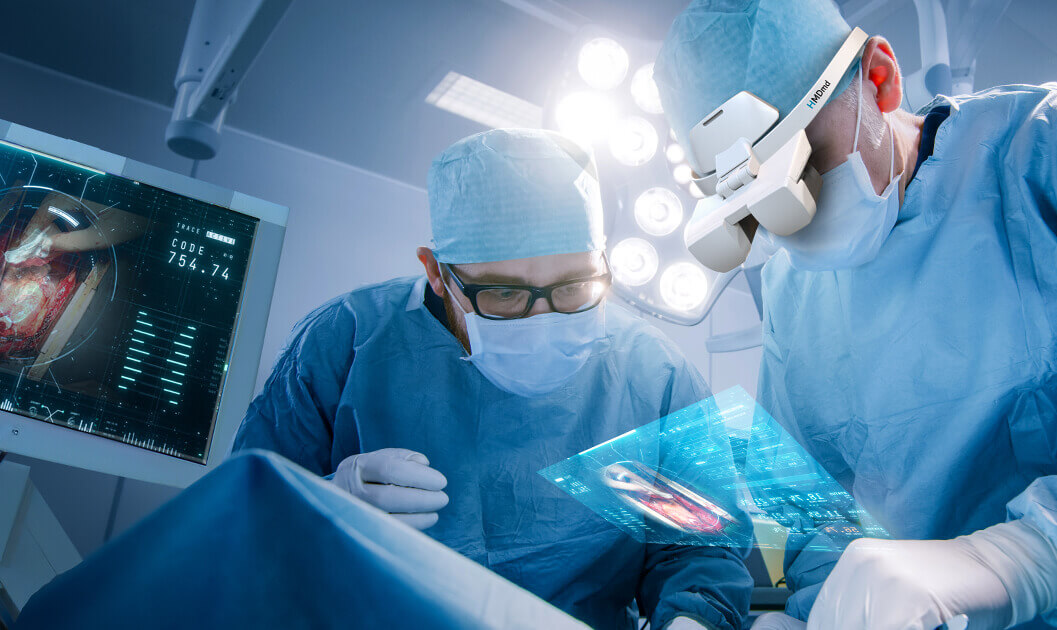Digital technology is driving the future of surgery, powering surgical teams with next-generation computing, connectivity, control and visualization.
Wearable displays are a key component of this digital revolution, providing surgeons with an ergonomic, real-time interface with the output of this accelerating digital technology, be it high-resolution 3D video of the anatomical images, case-specific diagnostic data or critical navigation directions. Kopin is at the heart of this high-growth-potential market, as the exclusive development and manufacturing partner of HMDmd, Inc., founded by experienced medtech executives who have pioneered the application of wearable displays in surgery.
“We expect that wearable displays will be ubiquitous in the operating rooms of the industrial world by the end of this decade. And to be clear, these will not be re-purposed displays from the consumer market. Rather, they will be purpose-specific, medical grade and constructed with the attention to human factors which depends on deep experience in the development and manufacturing of military-grade wearable displays. As a partnership, Kopin and HMDmd combine technological excellence with extensive experience and connections, both clinical and commercial, in the surgical market.”
John Lyon, CEO, HMDmd
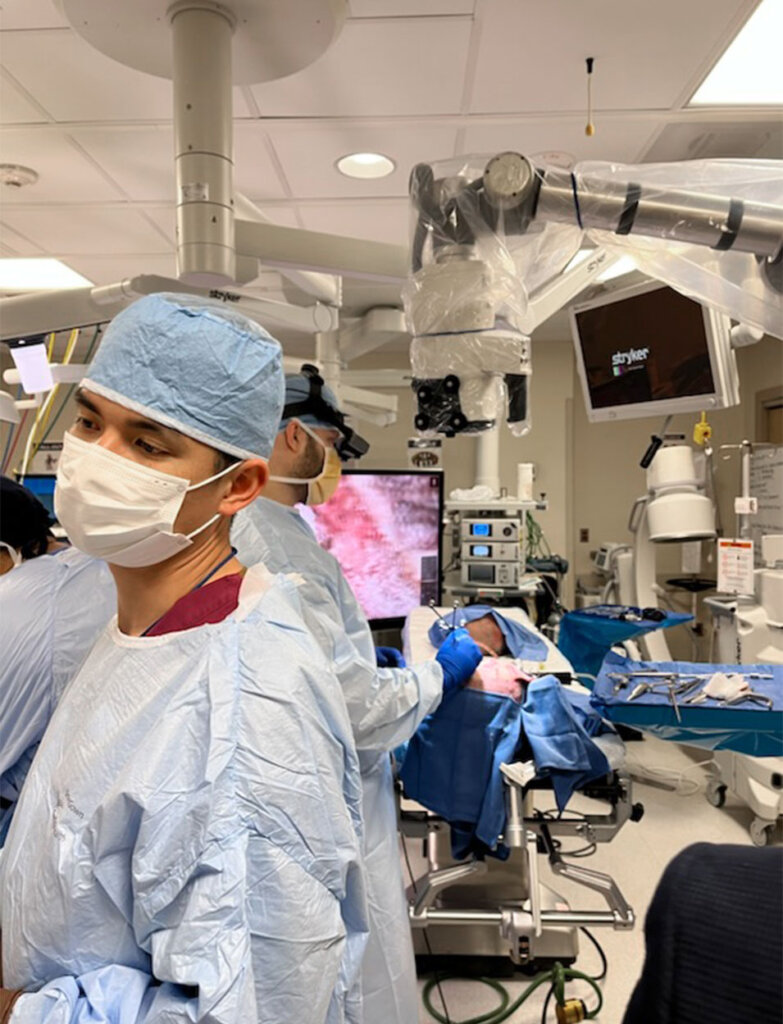
Premier surgical device company is a leading developer of digital operating microscopes, called exoscopes. Their next generation system has just been introduced and their intent is to offer the HMDmd Model CR3 Wearable Monitor as a visualization option to the standard boom-mounted 55 inch monitor. Premier surgical device company has conducted several evaluation labs of their system with a prototype of the CR3, including one at a major medical center in the South-East, which is pictured.
The principle of an exoscope is that the anatomy on which the surgeon is operating is shown on a 3D monitor, rather than observed through oculars as it would be on a conventional optical microscope. The exoscope configuration allows a much more comfortable posture for the surgeon as well as numerous other benefits, such as better 3D vision and magnification of the surgical field. The physical presence of the exoscope is also less space-intensive than that required by an equivalent microscope.
At the evaluation lab, the benefits of the wearable monitor were found to be compelling in general but particularly persuasive for certain surgeons who had reservations in switching to the exoscope.
These benefits are summarized here:
- If several surgeons are looking at the primary 3D boom-mounted monitor, then their lines of sight to the operative anatomy are different. If they are each using a wearable monitor the lines of sight of all are identical to that of the primary surgeon. These monitors are large and require space within the congested operating room and require layout planning to accommodate each surgeon’s line of sight. This is eliminated with the use of the wearable display.
- Observing the monitor allows for a wide range of peripheral distraction. The wearable, while allowing enough peripheral vision to provide situational awareness, is comparatively immersive, similar in view to a traditional microscope and limits the intrusion of peripheral distraction. This familiarity should aid in the surgeon’s adoption to the exoscope.
- Some users found that their perception and brightness of the 3D image was reduced on the monitor but satisfactory on the wearable. This is not surprising: to see 3D on the monitor a user has to wear polarized glasses. On the wearable there are two microdisplays receiving left and right images, so the 3D view is equivalent to that of the optical microscope. (Note: the user’s view on the wearable is the equivalent of looking at a 50inch monitor from a distance of 6 feet.)
Conclusion:
Providing users with complementary wearable monitors enhances utilization of the exoscope for most users and can be considered critical for some users who otherwise would be reluctant to make the switch from a conventional optical microscope.
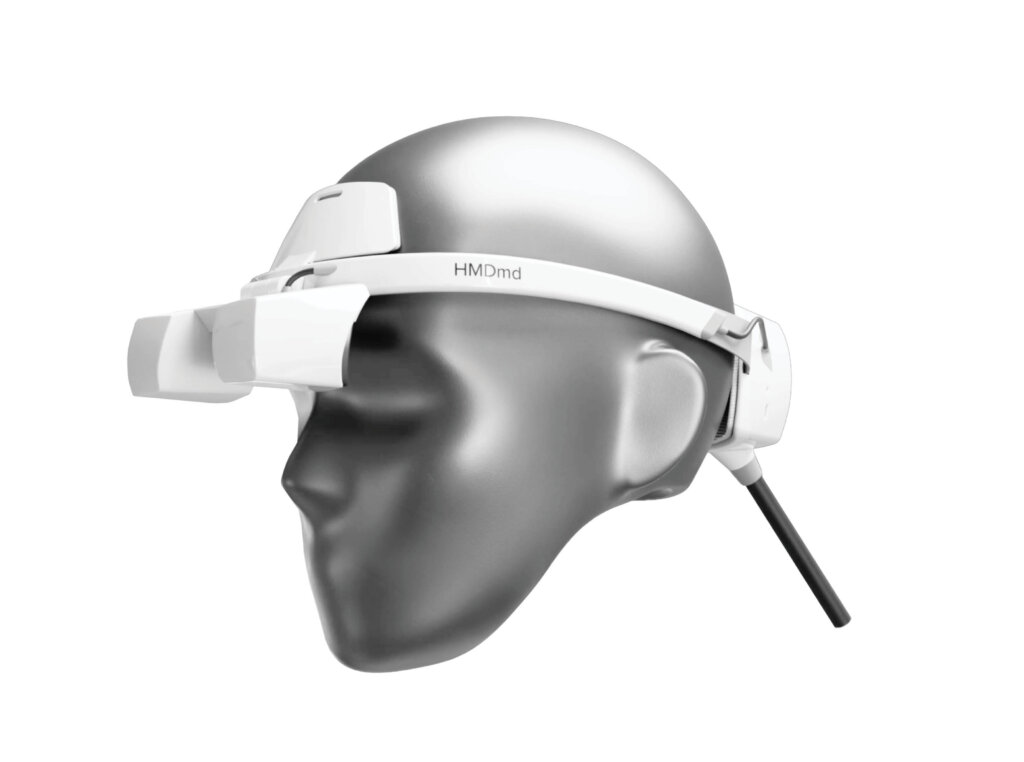
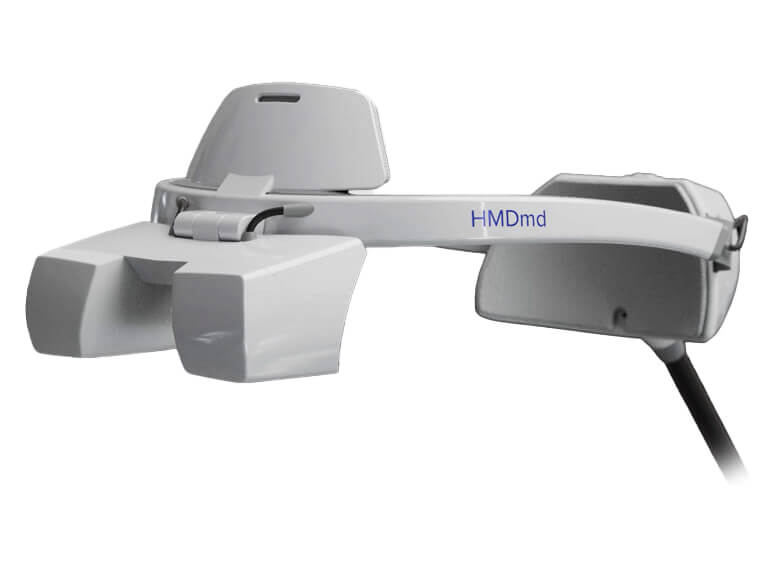
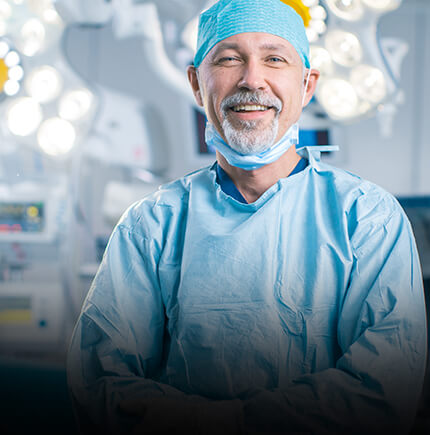
“Kopin has been at the forefront of wearable technology for decades, with a deep vested interest in the surgical market. Partnering with HMDmd on the development and manufacturing of the HMDmd Model CR3 Wearable Monitor for Premier surgical device company aligns with our strategy to provide application specific solutions. We look forward to our continued partnership with HMDmd, and providing our knowledge and expertise in support of Premier surgical device company’s next generation system.”
Michael Murray, CEO, Kopin
